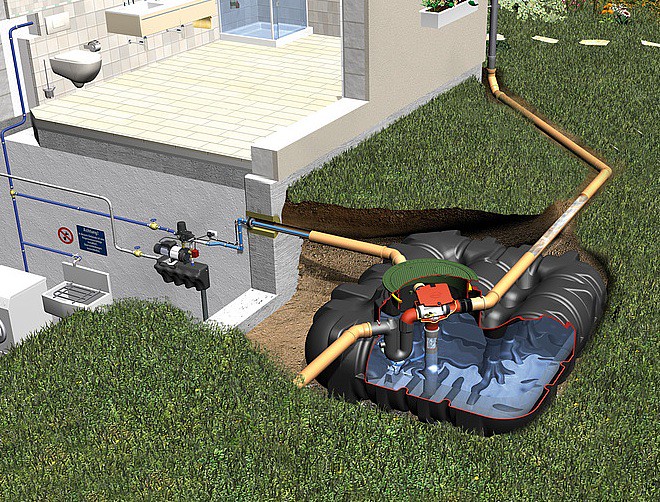I have installed this rain water harvesting tank now:
ECO-Plus package suitable for pedestrian loading
The tank is in the ground, and connected to part of the roof area, but the rest of the installation is still in the works.
I have chosen the currently largest tank in this series, 7500 liters (2000 USG). The price in USD is around $4400 at the moment (weak dollar!). The Graf rainwater tank is a German product, so it is priced in EUR.
It might seem like a lot of money - why not DIY from bottom up? There are so many things to consider, it seemed better (and cheaper) for me to go with a well tested system. I don't want to reinvent the deep plate. I looked at more local products, but they were so expensive - I think because of low volume. In Germany, rain water harvesting seems a lot more common.
In this system, normally the tank itself has no pump built in - a tank-mounted boost pump is only required if the distance from the tank to the point of the external pump is more than 50' long / 10 feet up. As mine is just within this limit, I only need the pump which is built into the control/pump unit, inside the house (must be frost free!). It does not need to be primed in case it has run completely dry.
The water suction-feeds from the tank to the control unit, which in turn pumps it onwards to the appliances and outlets in question (for now, washing machine and toilets). Inside the control unit is a small cistern, which allow mains water to be added if I should run dry - then it tops up inside the small internal cistern automatically.
There is no physical possibility for the rain water to be pumped into the mains, as the mains water feeds the cistern (before the pump).
This satisfies the legal requirements, where as one-way valves and so on, do not. All pipes with rain water in must be clearly marked to avoid future mixup of the two. Mains meter and main shut-off valve should also be placarded "Rain water system installed in this house"
From the tank, there is a floating filter, which ensures water is taken about half a foot below the surface. There could be oil and other items lighter than water floating the top, as well as sand on the bottom, so this is where the cleanest water is.
If it does not damage the tank, I might install a UV-light inside the tank, to run whenever the pump runs. Even though rain water is quite clean, there will be pollution sources such as bird droppings on the roof. But since the tank is well underground, the water should keep a temperature around 40F or so, year round. Also, there is no sunlight at all, so any bacteria there would have minimal growth conditions. In the winter, the water is also kept free from freezing, which ... is kind of nice too!
Winter is where I think I am most likely to run out of rain water, especially in the event of the winters we had the last two years. Lots of precipitation, but no thaw for a long time - everything on the roof is frozen solid ...
I filled the tank half way during installation in the ground. This is required to avoid the tank to "float" in the gravel. I connected part of the roof at this stage, and the remaining 1000 USG has already filled, even before I have had the system connected to the house!
I will post more here, once the system is completely up and running.

